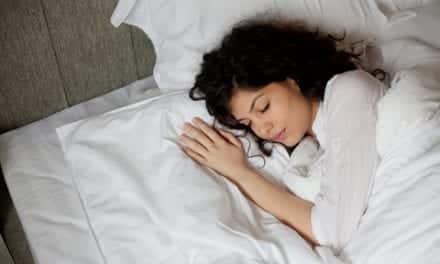A Danish study has found a link between the natural yellowing of the eye lens that absorbs blue light, and sleep disorders. As this type of lens discoloration worsened with age, the risk of insomnia increased.
The researchers examined the eyes of 970 volunteers by lens autofluorometry, a noninvasive method for determining how much blue light is transmitted into the retina. Blue light is a portion of the visible-light spectrum that influences the normal sleep cycle by helping initiate the release of melatonin in the brain.
Study participants were considered to have a sleep disorder if they confirmed that they “often suffer from insomnia” or if they purchased prescription sleeping pills within the last 12 months. Of those classified as having a sleep disturbance, 82.8% affirmed that they both suffered from insomnia and used sleep medication.
Using this data, the researchers calculated an inverse relationship between blue light transmission and the risk of having sleep disturbances: the lower the blue light transmission into the retina due to a yellowing of the eye lens, the greater the risk of sleep disturbances.
“The results showed that while age-related lens yellowing is of relatively little importance for visual function, it may be responsible for insomnia in the elderly,” said Line Kessel, MD, the study’s lead author and senior scientist in the ophthalmology department at Glostrup Hospital in Denmark.
The researchers further found significantly higher rates of sleep disturbances were reported by older participants, women, smokers, and those with diabetes mellitus. Given that previous studies have shown that the rate of lens aging is accelerated in smokers, patients with diabetes mellitus, and those at high risk for ischemic heart diseases, the researchers addressed these factors in their statistical analyses, finding that the association between blue light lens transmission and sleep disturbances remained significant even after the results were corrected for age, sex, diabetes mellitus, smoking, and the risk of ischemic heart disease.
The findings appear in the September 1 issue of the journal Sleep.




